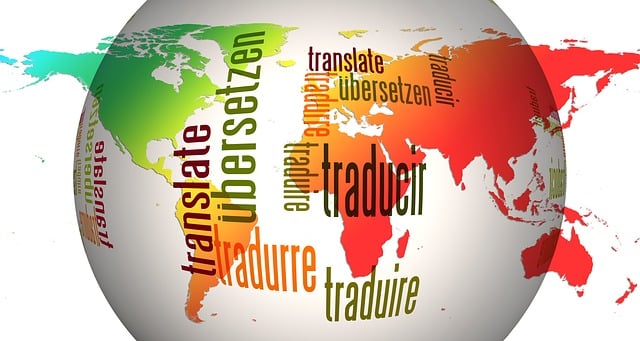New translators face challenges balancing accuracy and cultural nuances in translation, especially with humor, sarcasm, and idiomatic expressions. Deadlines often lead to literal translations ignoring context. Code switching for different cultures requires maintaining flow. Expert guidance from services like Linguistic Matching is vital. Overlooking fluency in the target language hampers accurate translation. Modern training emphasizes language skills and cultural sensitivity for nuanced, effective translations.
New translators often encounter challenges, leading to common errors that can impact the quality of their work. This article explores five significant pitfalls new translators typically face, including misunderstandings of cultural nuances, inaccurate word-for-word translation, unnecessary additions or omissions, and the critical issue of target language fluency. By recognizing these errors, aspiring translators can enhance their skills and deliver more precise and culturally sensitive translations.
- Misunderstanding Cultural Nuances
- Inaccurate Word-for-Word Translation
- Omission or Addition of Words
- Neglecting Target Language Fluency
Misunderstanding Cultural Nuances

New translators often face challenges when it comes to understanding and conveying cultural nuances in their work. While language is just one aspect, culture plays a significant role in communication. A literal translation might not always capture the intended meaning; for instance, humor, sarcasm, or idiomatic expressions can be particularly tricky. What’s considered humorous or acceptable in one culture may not land well in another. Translators must strive to balance accuracy and cultural appropriateness, ensuring that the translated text resonates with the target audience without losing its integrity.
Deadlines can exacerbate this issue. The pressure to meet strict timelines might encourage translators to opt for a more literal approach, overlooking the need for contextualization. Code switching—the practice of shifting between languages or dialects within a single text—is another pitfall. Translators must exercise caution not to disrupt the flow and coherence of the original text while adapting it to fit cultural contexts. Visit us at Linguistic Matching anytime for expert guidance on navigating these complexities in translation.
Inaccurate Word-for-Word Translation

One of the most common errors new translators make is relying too heavily on word-for-word translation, often leading to inaccurate and unnatural phrasing in the target language. While literal translation can be useful for certain types of content, it fails to account for cultural nuances, idiomatic expressions, and local customs knowledge. Each language has its own unique structures and rules that govern grammar, syntax, and semantics, which directly impact how information is conveyed.
For example, direct translations of brand names or terms related to specific industries might not be suitable due to differences in branding standards across cultures. Additionally, gender-neutral language is crucial for inclusive translation, as many languages do not have equivalent grammatical structures to convey gender neutrality found in English. Translators must adapt and transform the source text into a natural-sounding equivalent using appropriate terminology from their target audience’s linguistic landscape. Using automated translations or find us at translation software alone cannot capture these intricacies; it requires human expertise to ensure accuracy and maintain brand consistency throughout term base management.
Omission or Addition of Words

New translators often face challenges when it comes to understanding the nuances of translation. One common pitfall is the omission or addition of words, which can significantly alter the original meaning. This error occurs due to a lack of familiarity with the source language diversity and cultural context, leading to literal translations that don’t always convey the intended message accurately.
To ensure term precision, translators must develop a strong command of both languages involved. Utilizing CAT tools and leveraging existing brand consistency term base management can help streamline the process, but nothing replaces deep linguistic knowledge. For instance, idiomatic expressions or cultural references might not have direct translations, requiring the translator to adapt and choose equivalent terms that maintain the original sense. Remember, giving us a call at adaptation in translation term precision can provide invaluable guidance for navigating these complex issues effectively.
Neglecting Target Language Fluency

One of the most common errors new translators make is neglecting to achieve true fluency in the target language. While they might possess strong linguistic skills in their native tongue, translating accurately and effectively requires an understanding of nuances, idiomatic expressions, and cultural context unique to each language. A fluent translator can capture the intended meaning and tone, ensuring a natural-sounding text that resonates with readers.
This is where accredited programs and modern approaches come into play. Contemporary practices offer training focused on developing comprehensive language skills and cultural sensitivity. By participating in these programs and gaining real-world applications, beginner translators can refine their craft. So, if you’re new to translation, invest time in improving your target language fluency—it’s a cornerstone of delivering high-quality translations that meet the needs of diverse audiences. Give us a call at contemporary practices beginner translator for more guidance on navigating this essential aspect of translation.
New translators often encounter challenges, with common pitfalls including misunderstanding cultural nuances, relying on word-for-word translations, omitting or adding words unnecessarily, and not prioritizing target language fluency. To excel in translation, it’s vital to develop a deep understanding of both languages and cultures, refine skills through practice, and continually seek feedback to minimize errors. Investing time in research, staying fluent in the target language, and embracing professional development opportunities can significantly enhance the quality of translations.
